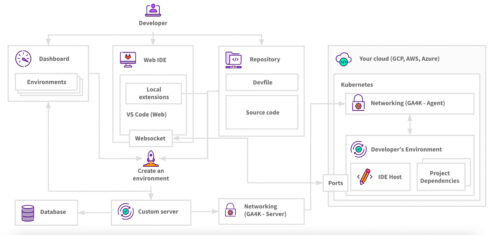
GitLab’s new release, Remote Development, enables organizations to directly support developers by letting them establish an environment that best suits where, when, and how they prefer to work.
It gets rid of location, device, and complex toolchain barriers to keep workflow distractions down to a minimum.
“For developers, frequent context-switching between different environments, navigating complex and extensive toolchains, and managing a local development environment can create friction,” GitLab wrote in a blog post. “GitLab Remote Development helps organizations better support developers by enabling them to spend less time managing their development environment and more time contributing high-quality code.”
The core of GitLab Remote Development is the Web IDE Beta, which allows users to safely connect to a remote development environment, execute instructions in a terminal panel, and get immediate feedback right in the Web IDE.
The Web IDE Beta uses a more sophisticated VS code interface and can carry out several of the most frequent tasks on the current Web IDE, such as committing changes to multiple documents and analyzing merge request diffs.
GitLab’s roadmap for Remote Development includes provisioning instances of remote development environments on demand in the customer’s choice of the cloud provider and allowing teams to share complex multi-repo environments.
Users will also be able to connect from many IDEs such as VS Code, JetBrains, Vim, or the Web IDE and access advanced security tools, authorization, reports, and audit logs.






